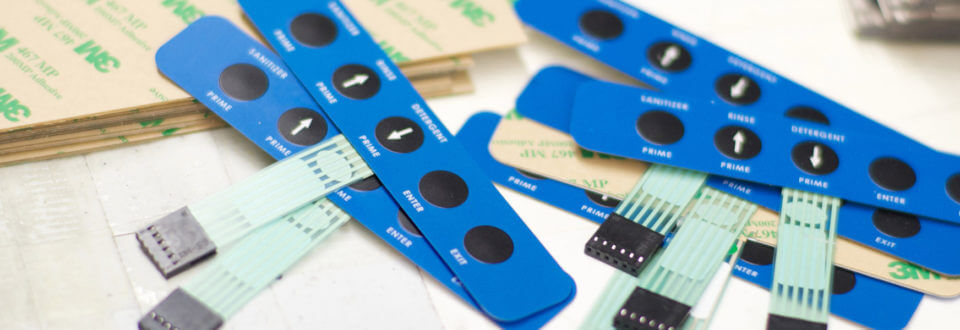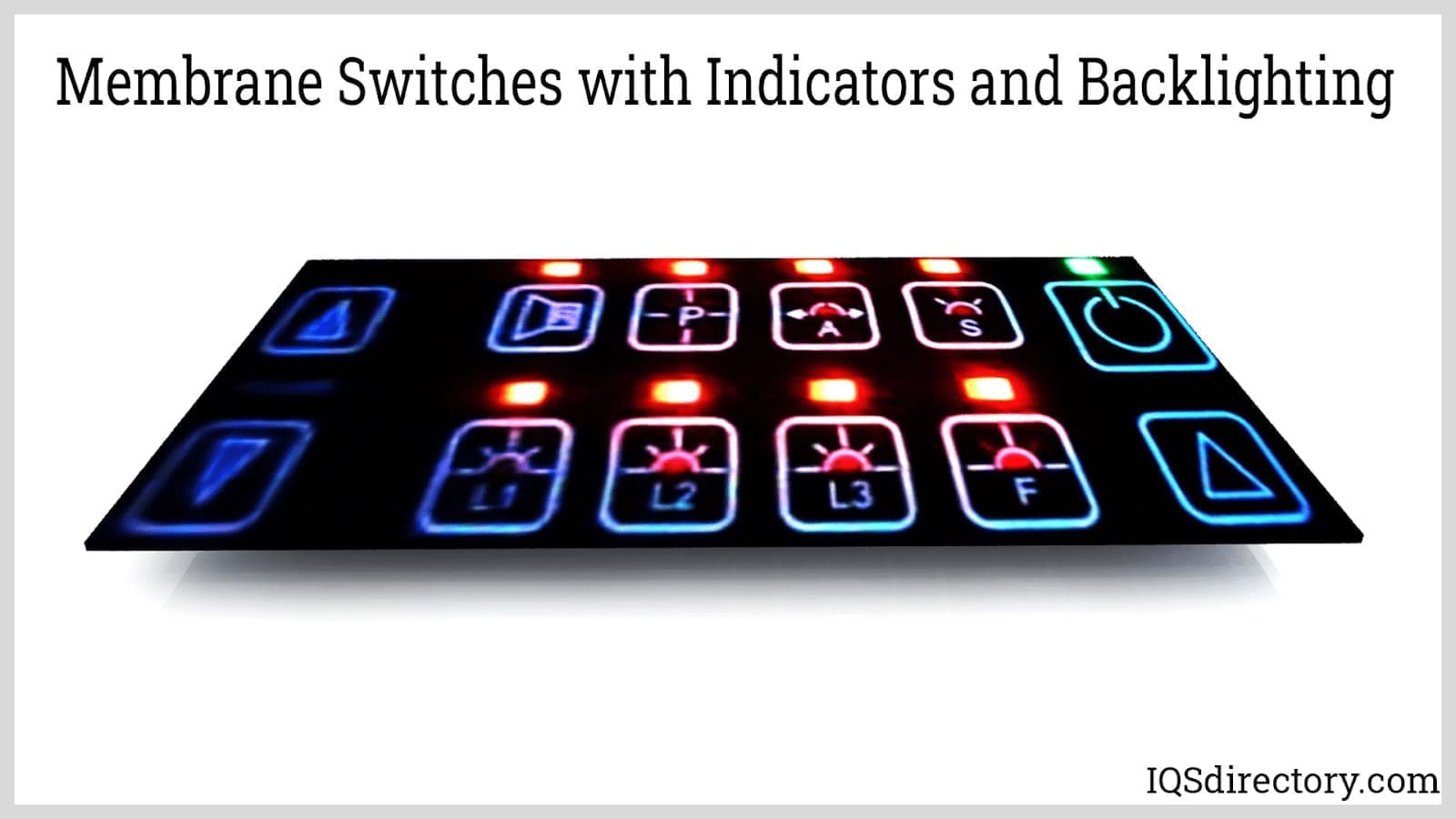The Impact of Membrane Switches on User Interface and Device Functionality
The Impact of Membrane Switches on User Interface and Device Functionality
Blog Article
Comprehending Membrane Changes: The Key to Resilient and Dependable Controls
Membrane layer switches over represent an essential aspect of contemporary user interface design, mixing capability with resilience in different applications. As we discover the intricacies of membrane buttons, it becomes clear that their function in improving control systems is both extensive and complex, elevating questions about exactly how finest to utilize their capabilities in future advancements.
What Are Membrane Layer Buttons?
Membrane switches are an advanced remedy in the world of user interface modern technology, combining performance and layout perfectly. These devices act as a user interface in between customers and digital systems, incorporating several components into a compact format. Generally built from versatile, thin layers of materials, membrane switches are developed to reply to touch, enabling users to communicate with machinery and electronic devices effectively.
The primary elements of a membrane button consist of a published circuit layer, visuals overlay, and a spacer layer that stops unplanned activation. The visuals overlay can be customized to show brand identity or customer preferences, boosting aesthetics while making sure use. Membrane layer buttons are typically made use of in various applications, consisting of medical devices, consumer electronics, and industrial tools, owing to their resilience and resistance to ecological variables such as moisture and dirt.
Among the crucial advantages of membrane switches is their ability to hold up against damage, making them excellent for high-traffic environments. In addition, they are lightweight and call for marginal area, enabling cutting-edge designs in product advancement. Generally, membrane switches stand for a effective and sensible selection for contemporary digital user interfaces, marrying technology with user-centric design principles.

Just How Membrane Layer Switches Job
The operation of membrane switches rest on a basic yet effective system that translates customer input right into electronic signals. These switches include multiple layers, typically including a visuals overlay, a spacer layer, and a circuit layer. When a user presses the button, the leading layer deforms, enabling a conductive element in the circuit layer to reach a matching conductive pad on the bottom of the visuals overlay. This contact closes the circuit and sends out a digital signal to the tool, suggesting that the button has been turned on.
The layout of membrane layer buttons can differ, but they usually include domes or responsive components to offer feedback to the user, enhancing the overall experience. The products utilized in membrane buttons, such as polyester or polycarbonate, add to their sturdiness and resistance to environmental factors, including wetness and dirt. The printed circuits are generally encapsulated, which shields them from wear and tear over time.

Advantages of Membrane Layer Buttons
One of the primary benefits of membrane buttons is their convenience in layout, permitting them to be tailored to satisfy certain customer requirements and aesthetic demands. This flexibility prolongs to different industries, where different shapes, sizes, and colors can be utilized to improve user communication and aesthetic allure.
Furthermore, membrane buttons are recognized for their sturdiness. Constructed from durable products, they are immune to dirt, moisture, and physical wear, which considerably extends their life-span compared to traditional mechanical buttons. This toughness makes them especially ideal for high-traffic atmospheres and applications calling for longevity.

Moreover, membrane layer switches offer a structured profile, leading to a thinner layout that can be incorporated right into numerous devices without adding mass. This feature go to my site not only enhances the aesthetic appeal but additionally contributes to an extra ergonomic item layout.

Applications of Membrane Layer Buttons
Easy to use and functional, membrane layer switches find applications throughout a variety of industries, consisting of medical tools, consumer electronics, and commercial devices. In the medical area, these switches are essential to gadgets such as analysis devices, patient surveillance systems, and mixture pumps, where dependability and ease of cleansing are critical. Their ability to hold up against rough environments and maintain functionality makes them ideal for such applications.
In consumer electronics, membrane layer buttons are made use of in items like microwaves, washing machines, and push-button controls - membrane switch. Their sleek style enables for intuitive interface, enhancing the total customer experience while supplying sturdiness and resistance to wear and tear
Commercial devices also gains from membrane buttons, specifically in control panels for machinery and automation systems. These buttons offer defense versus dust and moisture, making sure consistent efficiency in difficult environments. Their customizable attributes permit This Site makers to tailor them to certain operational needs, boosting effectiveness and functionality.
Picking the Right Membrane Switch
When picking a membrane layer button, it is necessary to think about numerous elements that affect performance and suitability for details applications. The main factors to consider include ecological conditions, tactile responses, resilience, and layout specifications.
First, analyze the operating environment; switches exposed to wetness, chemicals, or extreme temperatures call for particular materials to ensure long life and performance. Next off, evaluate the requirement for responsive responses. Depending on individual communication, some applications might gain from a tactile reaction to validate activation, while others might prefer a non-tactile design for aesthetic factors.
Sturdiness is one more important variable; membrane switches ought to be developed to stand up to constant usage, influences, and abrasion. Ensure the selected switch can endure the expected lifecycle, especially in high-usage situations.
Final Thought
In verdict, membrane layer switches over act as essential parts in the style of dependable and sturdy control systems throughout numerous sectors. Their he said portable style, integrated with robust building and customizable features, enhances user communication while making certain long life popular atmospheres. The flexibility of membrane switches over permits for customized services that meet specific functional requirements, strengthening their importance in modern innovation. membrane switch. As markets remain to evolve, the relevance of incorporating effective membrane layer button services can not be overstated.
Membrane layer switches represent a crucial facet of contemporary user interface design, mixing functionality with durability in numerous applications.Membrane buttons are a sophisticated option in the world of individual interface modern technology, combining capability and design effortlessly. Generally built from adaptable, thin layers of products, membrane switches are developed to react to touch, making it possible for individuals to interact with machinery and electronic tools effectively.
The style of membrane layer buttons can vary, but they usually integrate domes or tactile elements to give responses to the user, improving the total experience.In verdict, membrane switches serve as necessary parts in the design of resilient and trusted control systems across different markets.
Report this page